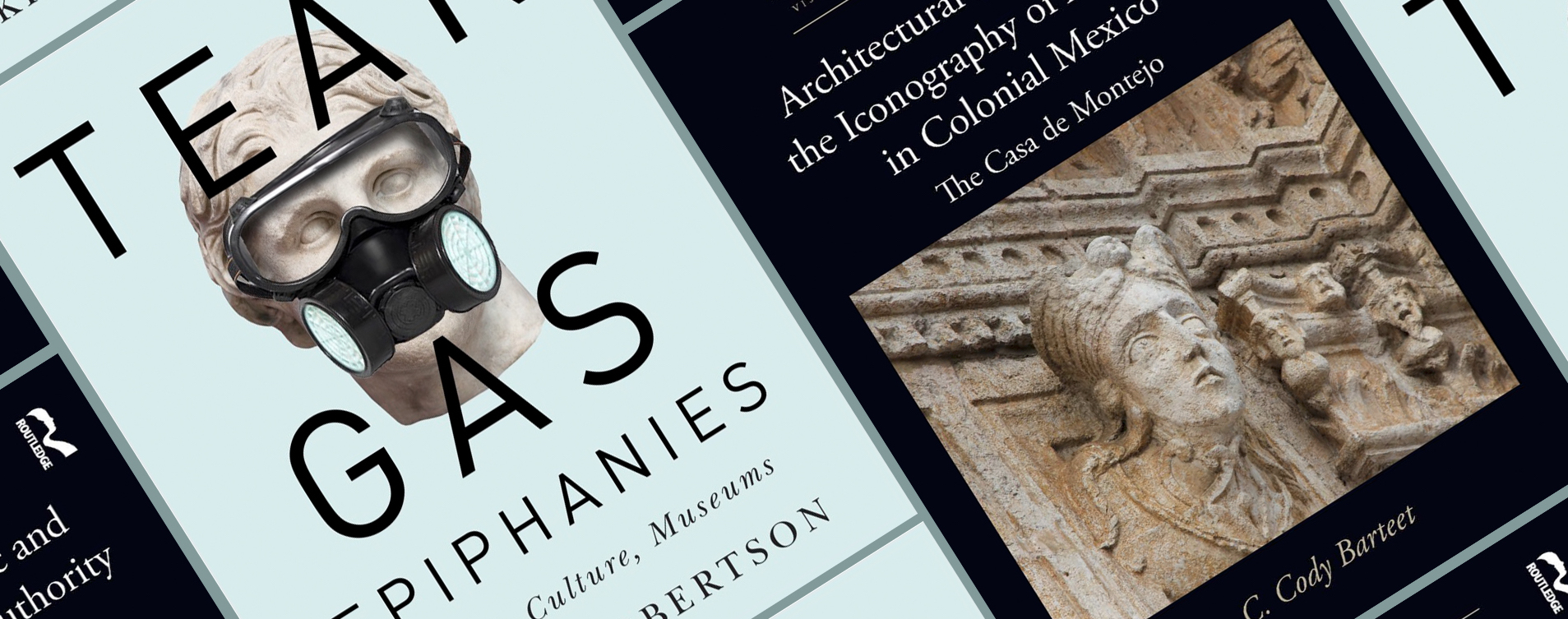Book Launch
Monday, October 21, 2019
3:00 to 5:00 p.m.

Tear Gas Epiphanies: Protest, Culture, Museums
Kirsty Roberston
Museums are frequently sites of struggle and negotiation. They are key cultural institutions that occupy an oftentimes uncomfortable place at the crossroads of the arts, culture, various levels of government, corporate ventures, and the public. Because of this, museums are targeted by political action but can also provide support for contentious politics. Though protests at museums are understudied, they are far from anomalous. Tear Gas Epiphanies traces the as-yet-untold story of political action at museums in Canada from the early twentieth century to the present. The book looks at how museums do or do not archive protest ephemera, examining a range of responses to actions taking place at their thresholds, from active encouragement to belligerent dismissal. Drawing together extensive primary-source research and analysis, Robertson questions widespread perceptions of museums, strongly arguing for a reconsideration of their role in contemporary society that takes into account political conflict and protest as key ingredients in museum life. The sheer number of protest actions Robertson uncovers is compelling. Ambitious and wide-ranging, Tear Gas Epiphanies provides a thorough and conscientious survey of key points of intersection between museums and protest and is a valuable resource for university students and scholars, as well as arts professionals working at and with museums.
Kirsty Robertson is Associate Professor of Contemporary Art and Museum Studies at Western University, Canada (London, Ontario). Her pedagogy involves curating large-scale speculative and experimental exhibitions with students, work that she has extended into independent curatorial projects such as Secret Stash (McIntosh Gallery, 2013). In her academic work, Robertson has published widely on activism, visual culture and museums, culminating in her book Tear Gas Epiphanies: Protest, Museums, Culture (MQUP 2019). Her work on critical museum studies has expanded into a new project focused on small and micro- collections that work against traditional museum formats. Since 2008, Robertson has additionally researched textiles, the textile industry and textile-based arts. She has written on textiles and technology, on craftivism, and is currently looking closely at petrotextiles (that is, textiles that are made from oil and that disintegrate into plastic microfilaments). As a part of this research, Robertson is a founding member of the Synthetic Collective, a group of artists, scientists and cultural researchers working on plastics pollution in the Great Lakes Region. Her co-edited volumes Imagining Resistance: Visual Culture, and Activism in Canada, and Negotiations in a Vacant Lot were released in 2011 and 2014, and her tri-authored volume Putting IP in its Place: Rights Discourse, Creativity and the Everyday was published in 2013.
For further information, please see www.kirstyrobertson.com.
Architectural Rhetoric and the Iconography of Authority in Colonial Mexico
C. Cody Barteet
Architectural Rhetoric and the Iconography of Authority in Colonial Mexico investigates the Casa de Montejo and considers the role of the building’s Plateresque façade as a form of visual rhetoric that conveyed ideas about the individual and communal cultural identities in sixteenth-century Yucatán. C. Cody Barteet analyzes the façade within the complex colonial world in which it belongs, including in multicultural Yucatán and the transatlantic world. This contextualization allows for an examination of the architectural rhetoric of the façade, the design of which visualizes the contestations of autonomy and authority occurring among the colonial peoples. Cody Barteet is Associate Professor of Early Modern Art and Architecture in Latin America and Europe at Western University, Canada (London). His research examines the relationships among architecture, urban forms, maps and textual data. In particular he investigates the exchange of cultural forms between the colonial Maya and occupying colonizers that resulted in new artistic forms in art and in maps. His published work has appeared in peer-reviewed Canadian and international journals including Konsthistorisk tidskrift: Journal of Art History (2017), South Central Review (Summer 2015), Imago Mundi: The International Journal for the History of Cartography (2015), Boletín de Monumentos, Históricos (2014), RACAR: Revue d’art canadienne/Canadian Art Review (2013, 2010). Recently, he completed his book Architectural Rhetoric and the Iconography of Authority in Colonial Yucatán: The Casa de Montejo (2019) that considers the evolution of Renaissance styles, architecture, and urbanism in colonial Yucatán. The manuscript reflects how Renaissance art forms were transformed and adapted by both Spanish and Maya peoples to exhibit their agency and autonomy in the sixteenth-century Hispanic world.





